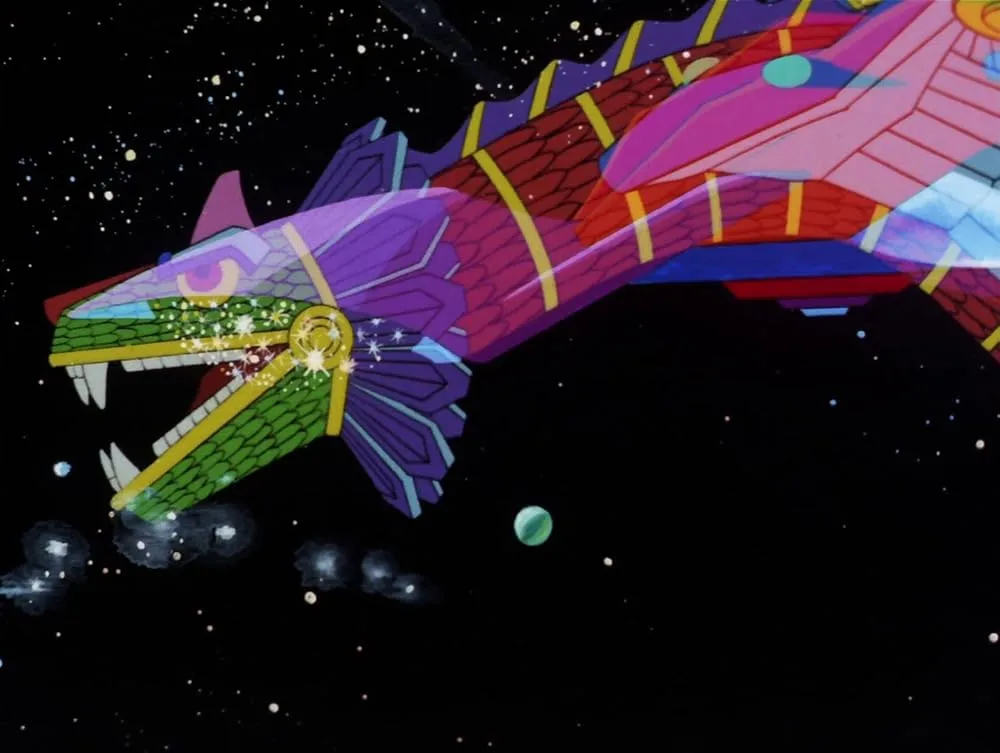
How Sharper Than a Serpent's Tooth (S02E05)
Airdate: October 5th 1974
Written by: Russell Bates & David Wise
Directed by: Bill Reed
Running Time: 22 minutes
The concept of extraterrestrial visitors intervening in human history—a notion popularised in recent decades by films such as those of Alien and Predator series—owes its roots to ideas that emerged long before these franchises. The 1968 publication of Erich von Däniken’s Chariots of the Gods?, which posited ancient astronauts as catalysts for civilisation, catalysed widespread fascination with the idea. This theme, however, found its way into science fiction earlier still, notably in early Star Trek episodes. Among these, How Sharper Than Serpent’s Tooth, the penultimate episode of Star Trek: The Animated Series, stands out as an early exploration of such concepts, blending myth, cultural reverence, and ethical dilemmas. While its narrative draws on von Däniken-esque theories, its legacy is overshadowed by its derivative nature and the broader obscurity of the animated series itself.
The episode opens with a mysterious alien probe hurtling toward Earth before self-destructing, prompting the USS Enterprise to investigate. Tracking the probe’s trajectory, the crew encounters a colossal, serpent-shaped vessel—a design instantly recognised by Ensign Walking Bear, the ship’s Comanche helmsman, as Kukulkan, the feathered serpent deity from Mesoamerican lore. Captured and brought aboard the alien craft, Kirk, McCoy, Scotty, and Walking Bear confront Kukulkan, a god-like being who claims responsibility for humanity’s ancient advancements, from Egyptian pyramids to Chinese dragon myths. Enraged by humanity’s forgetfulness, he subjects the crew to a test to prove their worth. When the crew succeeds, Kukulkan reveals his zoo of exotic creatures, including a Capellan “power-cat,” a massive feline capable of immense destruction. Spock disables Kukulkan’s energy field, while McCoy frees the animals, endangering the deity. The crew rescues him by tranquilising the power-cat, forcing Kukulkan to acknowledge his mortality and release them. The resolution hinges on humility and coexistence, typical of Star Trek’s moral storytelling, yet the execution lacks the depth that defines its live-action counterparts.
Despite its cultural significance, How Sharper Than Serpent’s Tooth holds the unique distinction of being the only Star Trek entry to win an Emmy—specifically for Best Daytime Children’s Series in 1974. This accolade, however, has done little to cement its place in the memories of dedicated “Trekkies”. Its relative obscurity stems partly from the animated series’ niche status compared to the original live-action run, but deeper issues of originality compound this neglect. The episode’s plot closely mirrors Who Mourns for Adonais?, a Star Trek: The Original Series (TOS) instalment where Apollo, a Greek god, demands worship. Writer Russell Bates, a close friend of the late Gene L. Coon—a pivotal figure in TOS’s development—adapted Coon’s ideas as a tribute, substituting Apollo with Kukulkan. While the substitution introduces a broader cultural canvas—Kukulkan’s influence spans Mayan, Egyptian, and Chinese civilisations—the narrative structure remains derivative. The test-of-worth trope, the imprisoned aliens, and the deity’s eventual humbling all echo Coon’s earlier work, leaving little room for fresh innovation.
Bates’ creative choices, however, are not without merit. As a Kiowa writer, he infused the episode with ethnic specificity by introducing Ensign Walking Bear, the first Native American Starfleet officer in Star Trek history. Walking Bear’s recognition of Kukulkan as a mythological figure underscores the episode’s thematic focus on cultural heritage, aligning with Bates’ personal background. This inclusion was groundbreaking for its time, offering representation rarely seen in 1970s television. Yet, the character’s role remains ancillary, his significance overshadowed by the plot’s broader mythological framework.
Beyond its historical milestones, How Sharper Than Serpent’s Tooth struggles to rise above mediocrity. As an animated episode, it capitalises on the medium’s potential to depict fantastical creatures—the Capellan power-cat, for instance, would have been impractical in live-action—but these visuals serve the plot rather than elevate it. The moral about humility and coexistence, though noble, is delivered in a manner too simplistic for adult audiences, while the action sequences, though energetic, lack the gravitas of TOS’s more memorable episodes. For casual viewers, it functions as a solid adventure story; for Trekkies, it feels like a rehash of ideas Star Trek had already explored more compellingly. The animated series, constrained by its format and limited budget, cannot match the gravitas of live-action performances or the intricate worldbuilding of later Trek iterations.
RATING: 5/10 (++)
Blog in Croatian https://draxblog.com
Blog in English https://draxreview.wordpress.com/
InLeo blog @drax.leo
LeoDex: https://leodex.io/?ref=drax
InLeo: https://inleo.io/signup?referral=drax.leo
Hiveonboard: https://hiveonboard.com?ref=drax
Rising Star game: https://www.risingstargame.com?referrer=drax
1Inch: https://1inch.exchange/#/r/0x83823d8CCB74F828148258BB4457642124b1328e
BTC donations: 1EWxiMiP6iiG9rger3NuUSd6HByaxQWafG
ETH donations: 0xB305F144323b99e6f8b1d66f5D7DE78B498C32A7
BCH donations: qpvxw0jax79lhmvlgcldkzpqanf03r9cjv8y6gtmk9